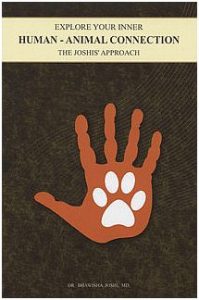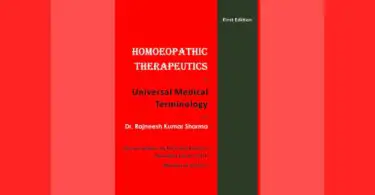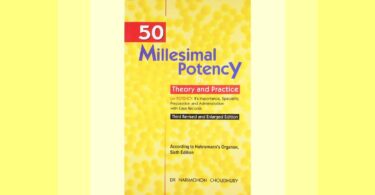Reviewed by Vatsala Sperling
Publisher: Dr. Sachindra Joshi,
64 pages, pb
publication 2014
product no. 19304
weight: 100g
ISBN: 978-93-5196-972-3
Printed in India
In the past few decades, homeopathy has been through a phenomenal growth spurt. We have been introduced to newer and ever evolving systems and methods for case taking, arriving at the similimum and extending the frontiers of homeopathic medicine. This is where Dr. Bhawisha Joshi’s approach finds a place and a voice in the form of her latest book, “Explore your inner human – animal connection, the Joshi’s approach”.
In a compact, simple and logical manner, this sixty page book takes the reader on a quick trip through three sections, namely, personality, personality mapping : the Joshi’s approach and finally, exploring the human – animal connection. In the first section, Bhawisha narrates how she grew to understand the uniqueness of personality and inner self, though she states clearly that it is not a spiritual, inspirational or religious book. Using quotes from Albert Einstein, Bhawisha discusses the six existential questions – who, why, what, when, where and how and indicates how these inquiries eventually help us realize our own unique personality. She points out that dualism, or our sense of separation from the “one” facilitates the manifestation of a pattern within us. Perception of I and non-I lead to polarity as well as lack of balance that are expressed as disease symptoms. In a few swift lines, Bhawisha brings out the role of stress in creating imbalance and the eventual disease state.
After this introductory part, in section two, Bhawisha presents the idea that in the Joshi’s approach, case taking is essentially about an attempt to understand a person’s unique personality type, his inner pattern, and his response to various stressors. In this exploration, the patient is an active participant and not just a subject of inquiry, interrogation, investigation and probing. He gets to understand his inner landscape, his strengths and weaknesses, and his way of responding to stressors and external stimuli. This knowledge brings him face to face with his inner self and he experiences freedom from the powers and forces that hold him back. An increase in awareness about his inner self and pattern is the key that helps him map his own route to wellness. As a bonus he might as well find answers to some of his existential questions.
Since the Joshi’s approach helps the patient trace back the root of their inner disturbance, Bhawisha has touched upon the body – mind connection and presented a couple of mini cases to show us how these patients understood this vital connection as the basis of their state of wellness and illness.
Section three of this book goes into the heart of the Joshi’s approach. Bhawisha narrates how the exploration of our unique personality pattern can match an animal in nature. Though a patient can be given a remedy from any kingdom, when a patient discovers his innate human – animal connection and gets a remedy from an animal he is able to relate to, he experiences total healing. To illustrate this point Bhawisha gives a few succinct cases. It is interesting to read that though, as human beings, we are animals first and foremost, we have successfully distanced ourselves from other animals. By living a so-called civilized and modern lifestyle, we have created a bubble around ourselves from which our fellow animals are excluded. But are they truly excluded? Apparently not, because within ourselves we do carry an animal pattern that can be matched with an animal that we may or may not know about, but at an energetic level we are able to relate to. This fact, Bhawisha claims, is the reason for her exploration of the human – animal connection.
In the last chapters, Bhawisha gives a preview of various animal groups like mammals, birds, insects and reptiles, their characteristics, strengths and weaknesses and how they are reflected in a human experience.
My take on this book is that it successfully gives a taste of the unique energy and vigor that Bhawisha has brought into the forefront of homeopathy and establishes the exploration of human – animal connection as a unique way of case taking and finding a simillimum.
In the history of homeopathy, ever since its conception in the mind of Hahnemann, there have been many innovators and pioneers, and many of them have written extensively, but mostly for homeopaths. Hahnemann’s The Organon is our time- tested classic. Vithoulka’s Science of Homeopathy has made homeopathy comprehensible for the common reader. In his book, Homeopathy for Today’s world, Sanakaran has reached homeopathy consumers, just as Dana Ullman, Amy Lansky and Timothy Dooley have written books that offer a great introduction to homeopathy. To be in the same league, Bhawisha’s book needs more content and depth.
Though personally, I find this book to be too brief, I must add that briefness is also its strength. It is easy to read. It appeals to the beginner reader and consumers of homeopathy. It speaks coherently to the non-homeopathic practitioners and even mainstream therapists and professionals. It is a perfect book for getting you started with the Joshi’s approach and keeping a few copies of this book available for your clients to read and browse in your office reception area will also help educate your clients in the process. You would never guess that touching upon an human-animal connection that is inherent in all of us could open all these doors but it has and it is a great delight to see Bhawisha marching right in and teaching us what we need to learn about our human – animal connection.
Editor’s Note: This book review was first published in Spectrum of Homeopathy, Number 2 / 2015 and is reprinted in Hpathy with permission from the publisher of Spectrum, Dr. Katrin Sigwart.





